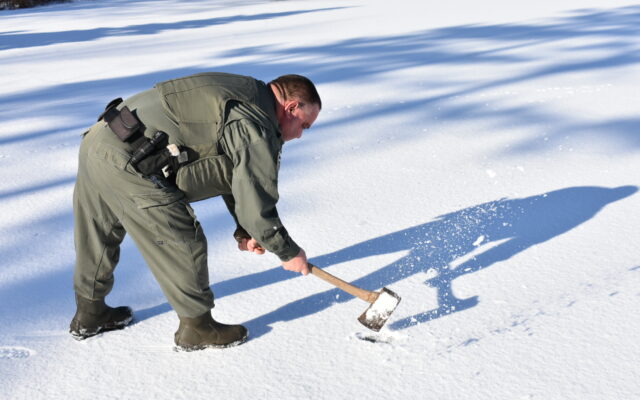
Maine Warden Service urges caution before venturing out onto any ice
Ice conditions vary across the state, and the Maine Warden Service is urging everyone to check the ice before heading out onto any of Maine’s lakes, ponds, and rivers.
“Ice conditions on many of Maine’s larger lakes are still unsafe, and even though smaller ponds may have ice, we are urging everyone to check the ice before heading out,” said Maine Warden Service Col. Dan Scott.
Recent warmer weather and rain throughout much of the state, coupled with the warmer than usual early winter, has left many lakes with open water, and other lakes and ponds with varying ice conditions.
“There are waters with areas of safe ice, but ice conditions can vary even on the same body of water, so best practice is to bring along an ice chisel or some means of testing the depth of the ice and check it frequently as you walk to your location,” said Scott.
For more information on ice safety, and a short video showcasing how to safely check the thickness of the ice, please visit mefishwildlife.com/icesafety.
“Use extreme caution especially if you plan to bring a snowmobile or ATV onto the ice. Not only does the added weight of the machine require thicker ice, but your increased speed causes you to move from safe to unsafe ice much more rapidly,” said Scott.
If you are considering going out onto the ice, the Maine Warden Service offers these tips to stay safe out on the ice:
Never guess the thickness of the ice — check it! Check the ice in several different places using an auger or some other means to make a test hole and determine the thickness. Make several, beginning at the shore, and continuing as you go out.
Check the ice with a partner, so if something does happen, someone is there to help you. If you are doing it alone, wear a lifejacket.
If ice at the shoreline is cracked or squishy, stay off! Watch out for thin, clear or honeycombed ice. Dark snow and dark ice are other signs of weak spots.
Avoid areas with currents, around bridges and pressure ridges. Wind and currents can break ice. Areas around Inlets and outlets always have thinner ice.
Parents should alert children of unsafe ice in their area, and make sure that they stay off areas with unsafe ice.
If you break through the ice, remember:
Don’t panic.
Don’t try to climb out immediately — you will probably break the ice again. Reach for solid ice.
Lay both arms on the unbroken ice and kick hard. This will help lift your body onto the ice. Once on the ice, roll, don’t walk, to safety.
To help someone who has fallen through the ice, lie down flat and reach with a branch, plank or rope or form a human chain. Don’t stand. After securing the victim, wiggle backwards to the solid ice.